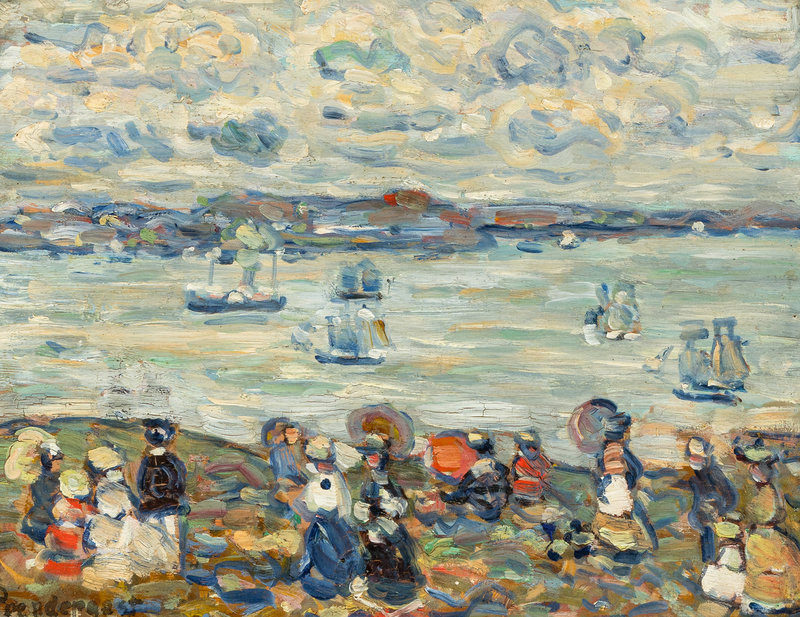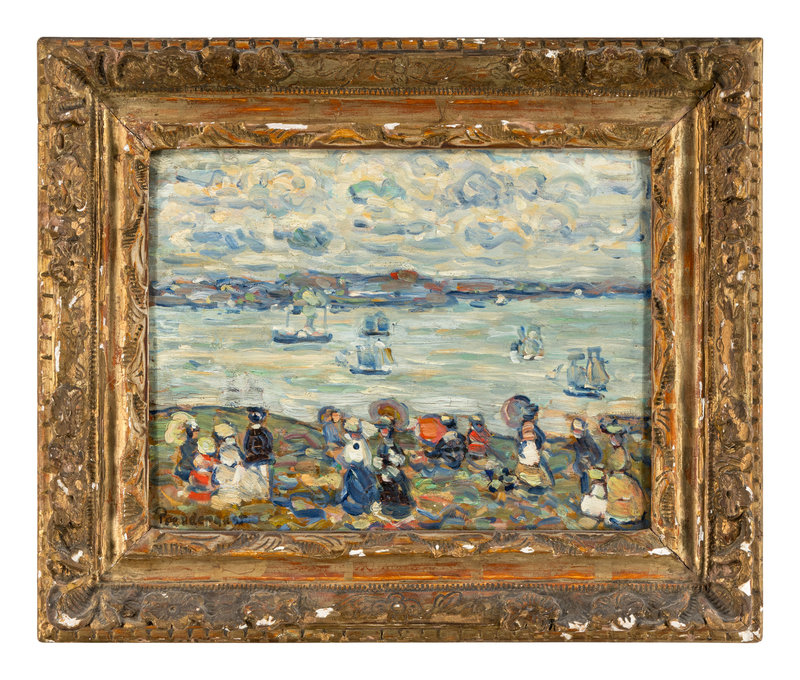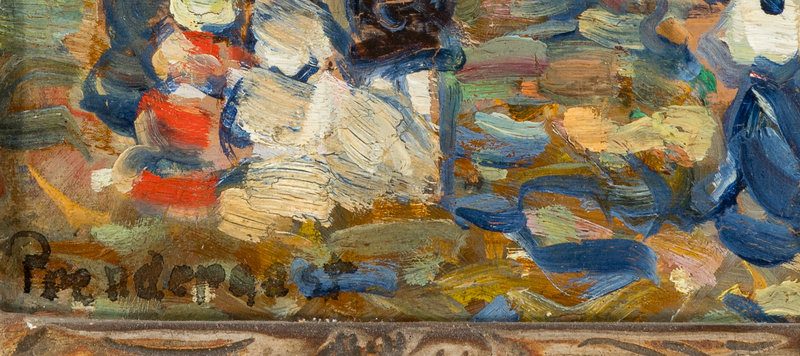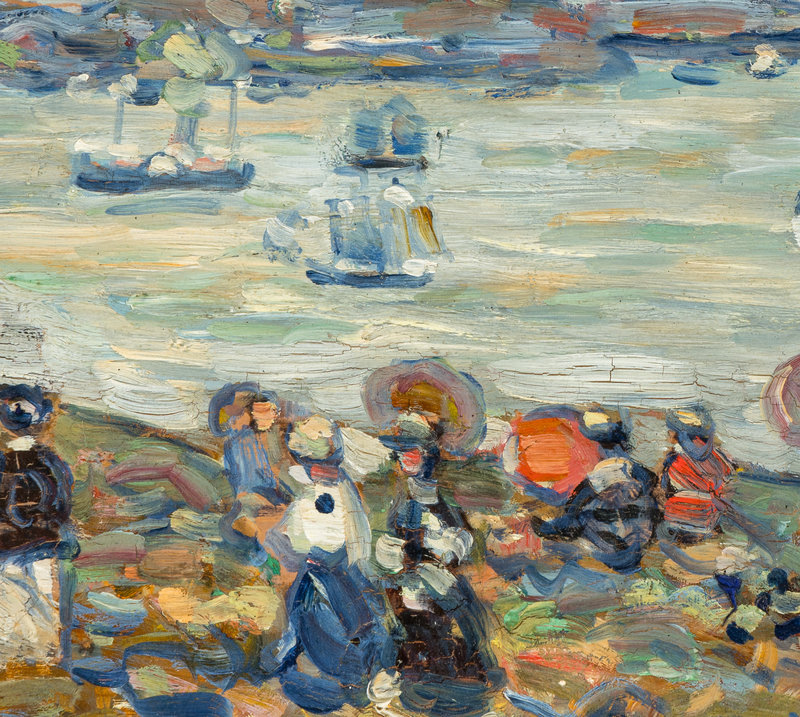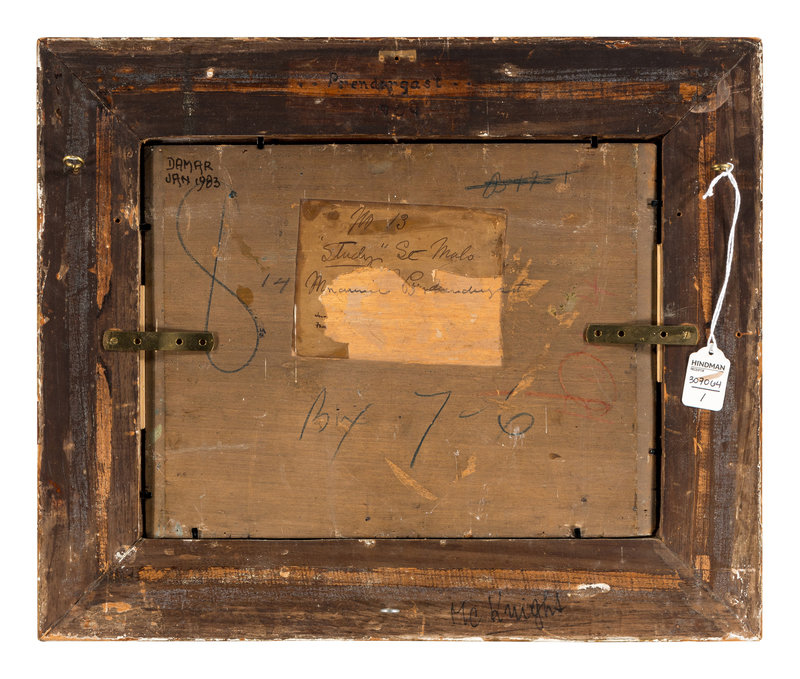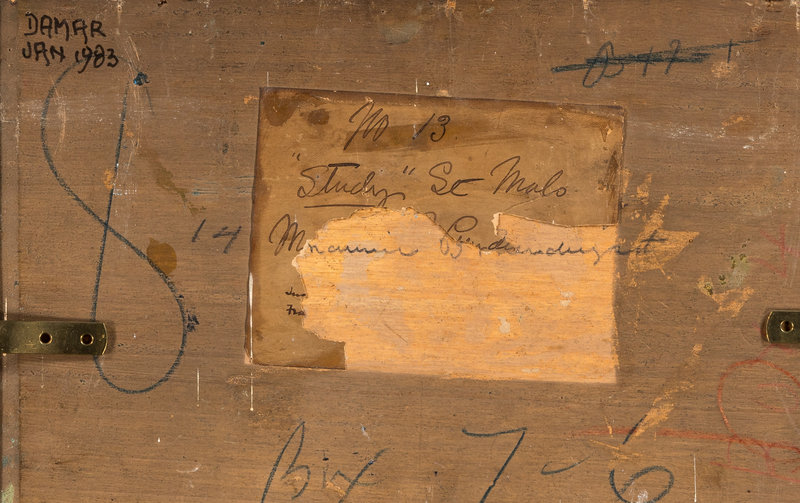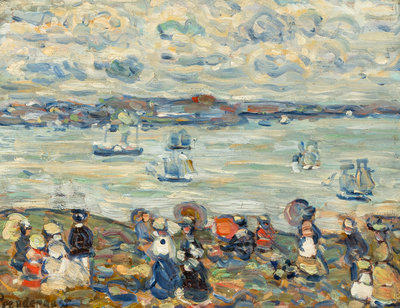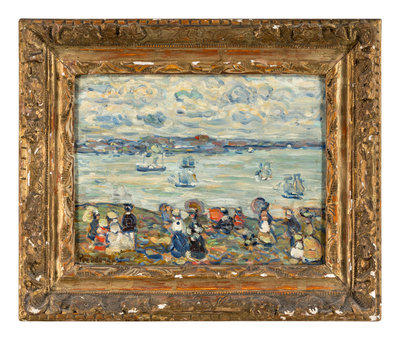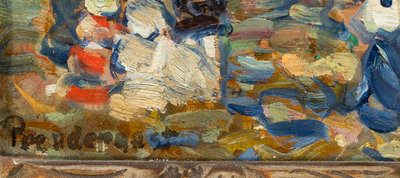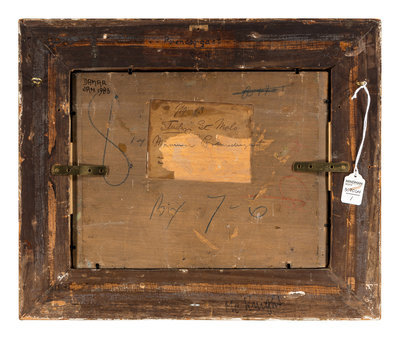Provenance:
Private Collection, Buffalo, New York
Thence by descent to the son of the above, Siesta Key, Florida
Thence by descent to the present owner, by 1975
Exhibited:
(possibly) Philadelphia, The Pennsylvania Academy of the Fine Arts, An Exhibition of Paintings by Arthur B. Davies, William J. Glackens, Robert Henri, Ernest Lawon, George Luks, Maurice B. Prendergast, Everett Shinn, John Sloan, March 7 - 29, 1908, no. 13
Lot note:
Both Study St. Malo No. 13 (Lot 1062) and Rocky Cove Beach, Marblehead (Lot 1063) represent Maurice Brazil Prendergast as a “painter of modern life.” The artist’s focus on middle-class leisure activities in public spaces reflects the interests of his urbane patrons. The crowd was his signature theme, with anonymous figures enjoying themselves in parks, plazas, and on beaches. This subject matter allowed him to develop his own distinct style that embraced spontaneous moments. Greatly influenced by not only the French Impressionists, such as Claude Monet and Edgar Degas, but also the Neo- and Post-Impressionists like Paul Cézanne, George Seurat, and Paul Signac, Prendergast captured movement and texture through loosely applied color arranged in a complex patchwork of free brushstrokes, vivid dots, and bold tonalities.
By 1907, the circa date of Study St. Malo No. 13, Prendergast was already a well-established artist in Boston and other American cities. However, by the beginning of the 20th century, he felt the need to see the new French modernist styles currently on view in Paris and to paint the coastal resorts in Normandy and Brittany. Earlier in the artist’s career, he had studied in Paris from 1891 to 1894, and visited the northern French coast with other American art students. Prendergast left for Paris in May 1907 and while there, he saw exhibitions that included the paintings of Cézanne, Félix Valloton, and Édouard Vuillard. Writing to a friend, Prendergast declared that “All those exhibitions worked me up so much that I had to run up and down the Boulevards to work off steam.” No mere acolyte, Prendergast absorbed the different styles and developed them into his own, and he began to paint with more vigorous brushstrokes and with a brilliant array of colors.
After Paris, the artist traveled to Saint-Malo on the Brittany coast, where he was to remain for the summer. While there, he executed a number of oil paintings on panels, including Study St. Malo No. 13. The heightened color and discernable movement toward abstraction can be seen as a direct reaction to the new French artistic movements. The composition is divided into four layers of near shoreline, water, distant shoreline, and sky, with the foreground figures creating a dense screen. Small, bright strokes outline the figures, rocks, and sailboats, and are strongly reminiscent of the port scenes of Paul Signac, as well as Cézanne’s technique of broken rhythmic color outlines. The loose brushwork likewise heightens the seemingly casual placement of the various colors.
Upon his return to the United States, Prendergast included the artworks created in France in several shows across the country. Most significantly, he was asked to participate in the February 1908 exhibition of The Eight at Macbeth Galleries in New York, which also traveled to several other cities, including Philadelphia, Chicago, and Detroit. The artist included seventeen works, at least ten of which were small panels painted at Saint-Malo. The exhibition catalogue does not list individual titles of the smaller panels, which are identified only by their checklist numbers and the generic title of Study, St. Malo. In March 1908, the Eight exhibition traveled to the Pennsylvania Academy of the Fine Arts. In the 1990 exhibition catalogue, Maurice Prendergast, Nancy Mowll Mathews states that for the panels that traveled to Philadelphia, Prendergast wrote on labels that he applied to the back of his paintings with the numbers that corresponded to the catalogue produced by the Academy. The present artwork’s frame bears a partial label written in the artist’s hand, No 13/”Study” St Malo/Maurice Prendergast. Although it is unknown if this painting was ever exhibited, the 1908 Pennsylvania Academy of the Fine Arts catalogue does list a “13. Study, St. Malo,” at a price of $200, though without the frame.
The Eight show proved to be a watershed exhibition of 20th-century vanguard art. Maurice and other members of The Eight shared an interest in similar subject matter—the leisure activity of people in an urban context, which originally derived from the French Impressionists. However, Maurice was unique among his colleagues, as at 49 years of age, he was the oldest member of The Eight and the only Bostonian. Moreover, he was represented in the exhibition by at least ten scenes of St. Malo, distinct from the other works in their European derivation and vibrantly colorful jewel-toned palette. This exhibition, which was to be the triumph of “American” art, also became a vehicle for the dissemination of the new French modernist styles, thanks to Maurice’s daring contributions to the show.
By 1914, Prendergast had settled permanently in his Washington Square studio in New York, with frequent trips in the summer to New England, including to Marblehead, the location depicted in Rocky Cove Beach, Marblehead. As in many of his late works, the artist here emphasizes the flatness of the pictorial plane with a frieze-like arrangement of figures divided between the rocky waterline below and strip of land with cottages above. The brightly clad, anonymous bathing figures reflect Prendergast’s many years observing the leisure class on holiday in New England and Europe. Nancy Mowll Mathews remarks, "The late idyllic paintings, with their visible signs of Prendergast's ceaseless attempt to improve his art, reveal an essential feature of Prendergast as an artist. He came to his profession without the advantage of family connections or wealth, but with a solid background in the virtues of hard work and progressive thinking. His talent gave him the tools to succeed in commercial art and as a view painter early in his career; his innate attraction to new ideas allowed him to move on to modernist circles and to play a part in the cultural revolution of the early twentieth century. Even when he restricted himself to a single idyllic message of peace and harmony late in his life, he worked to improve the expression in each one even if it meant dispensing with what went on before. His never-ending pursuit of a new solution gave him the courage to move beyond each success and create works that continually surprise and satisfy. For this he was recognized by his contemporaries and continues to be valued by posterity" (Maurice Prendergast, 1990, p. 38).
Works such as Study St. Malo No. 13 and Rocky Cove Beach, Marblehead reveal Prendergast’s meticulous execution and careful reconciliation of different color harmonies. The spontaneous brushwork and pure color of both the earlier oil painting and later watercolor combine to create striking modernist images of bustling summer days. It is with these elements that the artist melded together an energetic tapestry of urban life.
